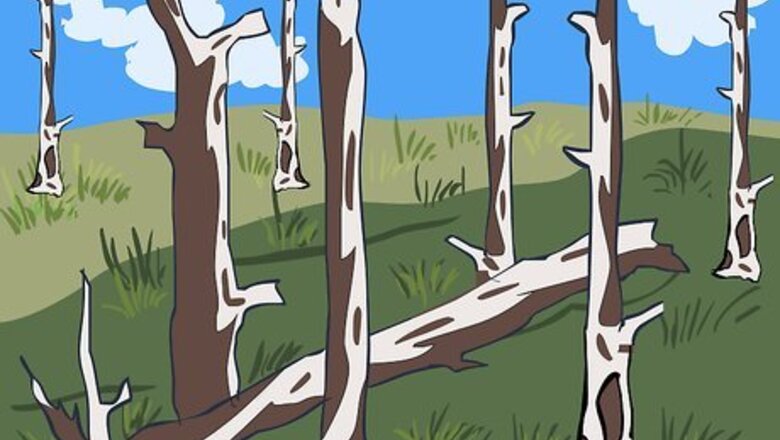
views
Preparing the Logs

Choose which logs you will use. The best choice is a log from a fire-killed standing dead tree. A wildfire burns diseased trees to the ground, but leaves healthy trees dead but still standing. Therefore, your chances of getting good logs are best from these trees. Fire-killed wood also loses its bark, saving you time when you start building. Build a Log Bed Step 1Bullet1.jpg You can find fallen logs or logs that wash onto a beach or riverbank. You can also buy logs from a sawmill. However, you may find after you start working that these are rotten or have other problems that make them unsuitable.Build a Log Bed Step 1Bullet2.jpg Cut live trees down to get logs if it's legal to do so. You will have to wait about a year for the wood to dry enough to build with it. Stripping the bark will help it dry faster.Build a Log Bed Step 1Bullet3.jpg
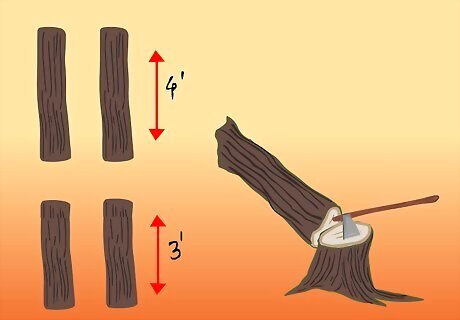
Saw the logs to the lengths you need for bed. Saw 2 4-foot (1.2 m) posts and 2 3-foot (90 cm) posts to make the legs and the ends of the headboard and footboard. The posts should be cut from large, sturdy logs.Build a Log Bed Step 2Bullet1.jpg Saw 4 rails to separate the posts. Measure the mattress width and cut the rails to be 1 inch (2 to 3 cm) longer. When you cut the tenons to fit the rails into the posts, they will be the width of the mattress.Build a Log Bed Step 2Bullet2.jpg Cut spindles to place between the rails of the headboard and footboard. You need 36-inch (90 cm) spindles for the headboard and 24-inch (61 cm) spindles for the footboard. After cutting the tenons, they will measure 1 inch (2.5 cm) shorter. The number of spindles you need depends on the size of the bed.Build a Log Bed Step 2Bullet3.jpg Prepare 4 bed rails to connect the headpost to the foot post on each side. Measure the mattress length and cut the bed rails so they're 1 inch (2 to 3 cm) longer.Build a Log Bed Step 2Bullet4.jpg
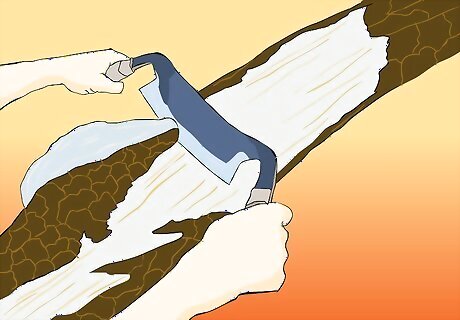
Remove the bark and shape the logs with drawknives. These are blades with 2 handles that you set against the wood and pull toward you. A curved drawknife removes bark and a straight drawknife shapes the log.
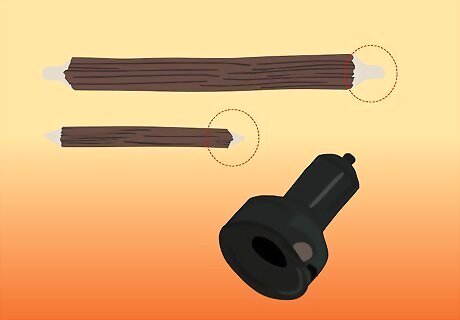
Form tenons in the rails and spindles. You can do this with a drawknife, but it's easier to do with a tenon maker, which attaches to a drill and operates like a giant pencil sharpener.
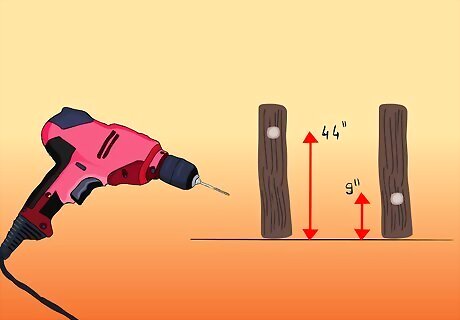
Carve out mortises with a drill and Forstner bits. Frostner bits drill flat-bottomed holes large enough to hold tenons. Mortises for the headboard should be cut at 9 inches (23 cm) and 44 inches (1.1 m) from the floor. For the footboard, the mortises are cut at 9 inches (23 cm) and 32 inches (80 cm).Build a Log Bed Step 5Bullet1.jpg Spindle mortises are cut so the spindles will be evenly spaced.Build a Log Bed Step 5Bullet2.jpg Mortises for the bottom bed rail are drilled at 5 inches (13 cm) above the floor in all 4 posts. The mortises for the top bed rail are drilled at 13 inches (33 cm) from the floor.
Assembling the bed
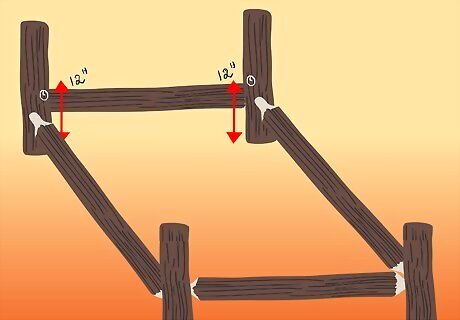
Attach a metal eye hook to each post at 12 inches (30 cm) above the floor. Place the eye hooks so you can stretch a cable between the right headpost and left footpost and the left headpost and right footpost.
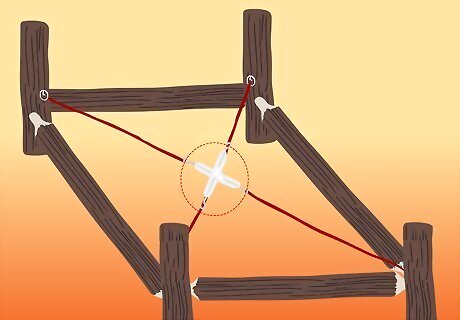
Connect cables diagonally between the bedposts using the eye hooks. Use turnbuckles in the centers to tighten the cables and hold the bed together. Adjust as necessary to make sure the bed is square.

Notch each of the top bed rails near the head and foot so the box spring will fit securely on them without slipping.
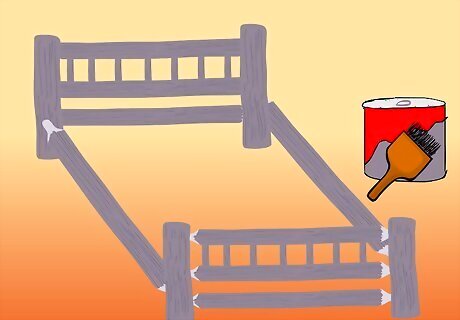
Stain the bed to protect the wood.
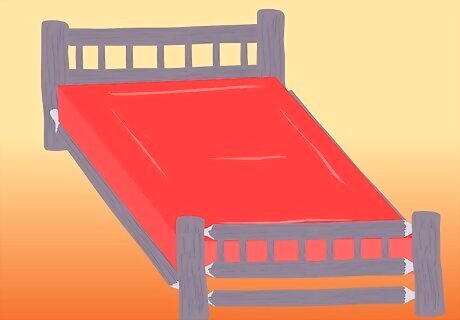
Top the bed with the box spring and mattress.















Comments
0 comment